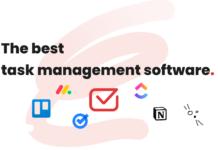
Before we dive into the art of selling, here is a question—have you ever imagined you will grow up to be a salesman?
Not really! Well, you are not alone. It is the irony of the sales profession that no one really wanted to become a salesperson and yet there are millions of sellers throughout the globe and across the industries.
Most of them get to test the water only when they enter the sales profession and while they work on to improve their competencies and build their reputation in the market, there is already a pressure to pump the top-line growth.
This pressure often takes away from them the thrill that usually comes from advancing in the career or following a career of choice and passion. As most entries in sales are career digression, making sales organizations to “nurture the art of selling” within the company requires a lot of motivation and enablements.
Learning in Sales
Unlike other professions, the true elements of selling cannot be compiled in books. You can learn about those elements in the book but no amount of reading theories could help when it comes to selling in real-world. This is because each person you are selling to is unique, each business is unique, and every process in a business is cut to fulfill the needs of the uniqueness of the business.
When a salesperson walks out of the office and sells in the field, they get a chance to apply those elements. Most salespeople you talk to will tell you how they improvised those elements or used it with certain limitations to make a cut through challenges.
Creating a process of learning
In practice, learning in sales is probably the most closest to “practice” just like in sports. The more you practice on the ground, the better you become. You can learn about the ground rules of sales, which again keep on improvising as the technologies update.
Just as in sports, there are coaches who although guide the players but cannot interfere in the match, there are coaches in sales too, in your organization it could be your sales managers or sales trainers, who make the salesperson familiar with the ground rules and elements that usually work.
Having a strong system of learning within the company is important to make every salesperson be it novice or seasoned, familiar with the sales enablers, the elements that help in selling. Ultimately it is the on-ground performance that matters, which also depends on how empowered the salesperson is with sales enablers.
Top Sales Enablers to Grow Your Sales
Sales enablers are basically elements that drive sales, help salespeople connect with their prospects and increase conversion. Sales enablers are categorized into three sections: data, content, and tools. Let us dissect a bit of each section to understand what goes into and how their value can be maximized.
-
Information
Technically-aware salespeople usually refer to information as data. You probably might have come across phrases such as “data is new currency or data is the new gold.” Such phrases might look like jargons at first, but if data is used properly, it can actually enable you to have a trunk filled with money.
Everyone who is associated with your business could create data for you. It is up to your capability to collect, process, and utilize data to gain insight into your processes. It is like getting into the mind of your prospects, your customers, your teams, and especially your business.
Using advanced sales CRM tools that help you capture and utilize a wide range of data, such as customer information, field sales team activity, invoice and payment details, and so forth. How readily such information is available to you determines your success in the business. As in tracking and monitoring, these data could help you identify the gaps in the processes and make informed decisions.
2. Content
Content could be simply treated as knowledge, which varies from knowledge about product, service, or customer. Right knowledge builds the customers’ confidence in service technicians. This knowledge is reflected in the way salespersons interact with prospects.
The issue is you cannot bring every salesperson on the same page from the knowledge perspective. Everyone in your sales team has different capability levels to consume and retain knowledge.
Creating a sound knowledge base which is accessible from anywhere at any time is a great help for salespersons. This knowledge base could include a wide range of content such as email templates, product manuals, features lists, proposals formats, customer history and so on.
If your salespersons mostly work in the field, then integrating the knowledgebase to field sales CRM software could be of great help for them.
3. Tools
The means of selling has been changing with new technologies since the last decade. It is happening because technology has a great impact on consumer behaviour.
With the rise of mobile technology, consumers are informed and empowered like never before. They have got platforms to consume knowledge. So by the time they meet the sales professionals in person, there is a good chance that they might have already crossed different phases of the sales pipeline.
Sales organizations must empower their sales representatives with tools like Pitcher, which helps them identify the needs of the prospects, where they stand in the sales pipeline and how they can capture the essentials of selling to drive conversions.
The Step Forward
It is the best time for the sales organizations to immerse themselves in new technologies, or say take the step forward. This is because most of the technologies some five years back were still evolving, but now they are proven to resolve the sales challenges. If you are interested in taking the step further, begin with introspection and evaluation of your sales process and determine your requirements.








